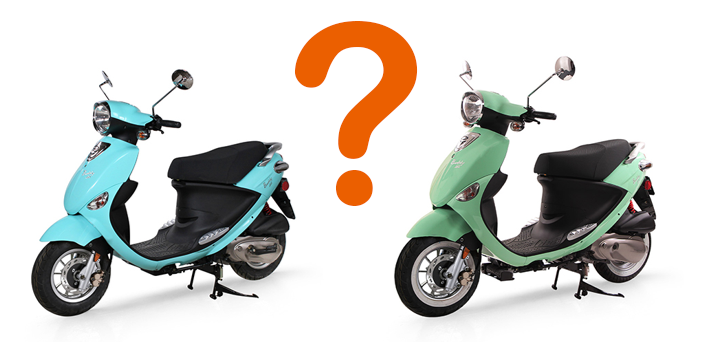Model Language
Policy Statement
Clarity and enforceability are two viable areas of improvement for statutory language related to mopeds/scooters. To address those areas of concern, model language intended to serve as guidance for traffic safety stakeholders is presented below. It is acknowledged that moped/scooter safety issues are highly localized, so the broad suggestions that are provided here can and should be adapted to meet the unique needs and challenges that exist in your jurisdiction.
Statutory Definitions
Statutory definitions for mopeds/scooters often include confusing and difficult-to-enforce requirements (e.g., thresholds for seat height and wheel size). Simplified statutory language would serve to improve understanding by riders and law enforcement, as well as by licensing and registration agencies. Additionally, in some cases, state laws place otherwise equivalent vehicles into separate classes based on their power source or the presence or absence of operable pedals, or they lack clarity regarding their applicability to one-wheeled vehicles, e-bikes, and kick scooters. Legislative language characterizing mopeds/scooters as non–motor vehicles (e.g., devices) is also problematic, as it serves to diminish the perceived risk associated with operating such vehicles.
Even unmodified mopeds/scooters are sometimes capable of top speeds exceeding manufacturer specifications and it is common and easy to remove the speed restriction devices from these vehicles. Therefore, it is recommended that statutory definitions identify a maximum speed without additional conditions, such as traveling on level ground. To ease interpretation, it is also advised that states avoid placing otherwise equivalent pedal and non-pedal vehicles into separate categories, and that mopeds/scooters, which are generally subjected to more restrictive licensing and registration requirements, are clearly distinguished from non–motor vehicles such as e-bikes. Finally, it should be understood that some states treat mopeds/scooters as a subset of motorcycles, so, in such cases, alterations to state motorcycle definitions may be necessary.
Model Statutory Language: Statutory Definitions
| A moped/scooter is a two- or three-wheeled motor vehicle, with or without pedals that allow propulsion by human power, the maximum operation speed of which does not exceed 30 miles per hour. If an internal combustion engine is used, its displacement shall not exceed 50 cubic centimeters. The definition of “moped/scooter” does not include low-speed electric bicycles or motorized scooters, and a moped/scooter shall be considered a motorcycle when operated at speeds in excess of 30 miles per hour. |

Helmet Requirements
Although helmet use is an effective method for reducing injury severity among moped/scooter riders, their rate of helmet use often falls well below what is observed for motorcyclists. Taking this into account, it is suggested that states consider enacting (or actively enforcing) legislation that requires the use of a DOT-compliant helmet and eye protection for riders of all ages. In lieu of a universal helmet law, it is suggested that a partial law applicable to riders aged 21 or under be enacted. Setting a lower exemption age is not advisable, as doing so would limit potential safety benefits since college students represent a large proportion of the user base for mopeds/scooters. At minimum, if more comprehensive efforts are deemed unviable, it is suggested that states enact and enforce moped/scooter helmet requirements of equivalent stringency to those observed for motorcycles.
Model Statutory Language: Helmet Requirements
| Any individual who is operating or riding on a moped/scooter shall do the following: (1) Wear a helmet that meets the standards established by the United States Department of Transportation under 49 CFR 571.218. (2) Wear a protective face shield, glasses, or goggles. |
Licensing Requirements
Most states require at least a standard driver’s license to operate a moped/scooter, but there is reason to suspect that the standard licensing process may insufficiently prepare moped/scooter riders to safely navigate public roads. In contrast, the requirements to obtain a motorcycle endorsement may be more appropriate, but some of the knowledge and skills acquired during motorcycle licensing are not relevant to operating a moped/scooter.
To address the aforementioned concerns, it is suggested that, in states where a motorcycle license or endorsement is not required (or obtained by choice), moped/scooter operators be required to complete a moped/scooter-specific knowledge test in addition to obtaining a standard driver’s license. That exam, as well as the material that must be learned to achieve a passing score, will be more applicable to moped/scooter operation than the standard knowledge test and will better prepare riders for the challenges associated with operating a two- or three-wheeled motor vehicle.
Additionally, since all fifty states and the District of Columbia have statutory language requiring motorcycle operators to complete a motorcycle-specific knowledge and (with the exception of Alabama) skills examination, it is suggested that such language be amended to include moped/scooter operators, exempting them from the skills test requirement.
Model Statutory Language: Licensing Requirements
| When an individual applies for a motorcycle or moped/scooter license or endorsement, knowledge of safe motorcycle or moped/scooter operating practices and traffic laws shall be tested using a written examination. A motorcycle skills test shall also be required for applicants who have not been previously licensed or endorsed to operate a motorcycle or moped/scooter. (a) If a standard license is already held, applicants seeking a moped/scooter endorsement are exempted from the requirement to complete a motorcycle skills test. (b) If a standard license is already held, applicants can take an approved moped/scooter safety course to fulfill the knowledge and skills test requirements needed to obtain a moped/scooter license or endorsement. |